The Global Sustainable Development Report (GSDR ) originated in the Rio + 20 outcome, when Member States were laying the groundwork for the 2030 Agenda and the Sustainable Development Goals (SDGs). The negotiators knew that the Agenda would be complex, and unprecedented in ambition, and that the traditional siloed approach to development would not be adequate. They recognised the power of science to understand and navigate relationships among social, environmental and economic development objectives, and so they called for a report to strengthen the science-policy interface. In 2016, Member States decided that the report should be produced once every four years, to inform the quadrennial SDG review deliberations at the General Assembly, and that it should be written by an Independent Group of Scientists appointed by the Secretary-General. They mandated that the Group would consist of 15 experts representing a variety of backgrounds, scientific disciplines and institutions, ensuring geographical and gender balance.
The Future is Now: Science for Achieving Sustainable Development, is the first Global Sustainable Development Report prepared by the Independent Group of Scientists appointed by the United Nations Secretary-General.
Paragraph 85 of the outcome document of Rio+20 (“The Future We want”) lists functions for the high-level political forum on sustainable development (HLPF), including to “strengthen the science-policy interface through review of documentation, bringing together dispersed information and assessments, including in the form of a global sustainable development report, building on existing assessments”.
The mandate for the Global Sustainable Development Report (GSDR) was further confirmed in GA resolution 67/290 on the HLPF; in the HLPF ministerial declaration in 2014 (E/2014/L.22 - E/HLPF/2014/L.3); and “Transforming our world: the 2030 Agenda for Sustainable Development” (A/RES/70/1). All these documents refer to the GSDR as a key instrument of the HLPF to strengthen the science-policy interface.
DESA produced three “prototype” editions of the GSDR in 2014, 2015 and 2016. In July 2016, in the Ministerial Declaration of HLPF, UN Member States agreed that the GSDR would become a quadrennial report drafted by an independent group of scientists (IGS) supported by a task team of six UN entities (DESA, UNCTAD, UNDP, UNEP, UNESCO and the World Bank).
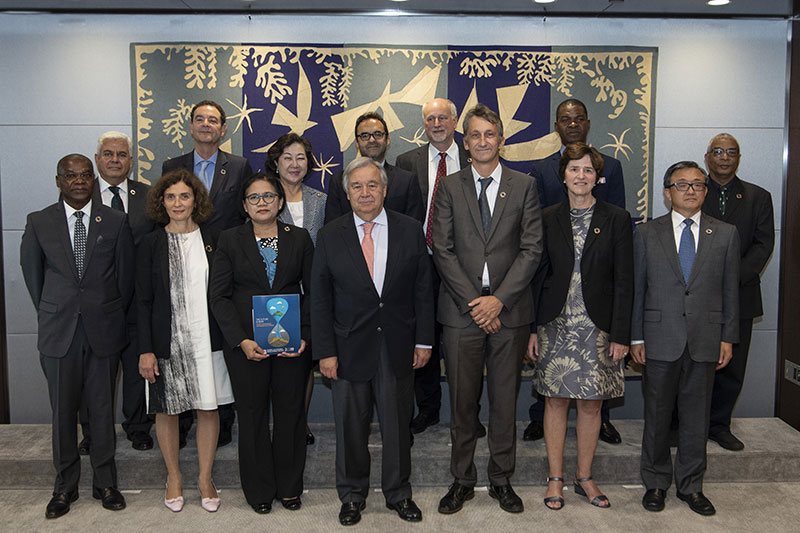
Mr. Parfait Eloundou-Enyegue (Cameroon)
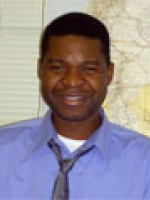 Parfait Eloundou-Enyegue (Cameroon) is Professor and Department Chair of Development Sociology, Cornell
University. His research in the realm of global development covers questions about the demography of
inequality, the sociology of
education, and the links between global population change and socioeconomic development. Within these
areas, he has worked on substantive questions on demographic dividends, youth bulges, intergenerational
exchanges, and the
demographic reproduction of inequality. In linking population and development, he is testing new
frameworks and methods that can link micro processes and aggregate outcomes of interest in global
development policy. Much of this work
has a strong policy orientation. Some of it seeks to advance understanding of the policy prospects and
policies for harnessing a demographic dividend in sub-Saharan Africa, and he has coordinated a network of
African researchers
working on this question. He is serving or has served on the Board of Directors several professional
organizations, including the International Union for the Scientific Study of Population (IUSSP), the
Population Association of America
(PAA), the US Population Reference Bureau (PRB), and the Guttmacher Institute.
Parfait Eloundou-Enyegue (Cameroon) is Professor and Department Chair of Development Sociology, Cornell
University. His research in the realm of global development covers questions about the demography of
inequality, the sociology of
education, and the links between global population change and socioeconomic development. Within these
areas, he has worked on substantive questions on demographic dividends, youth bulges, intergenerational
exchanges, and the
demographic reproduction of inequality. In linking population and development, he is testing new
frameworks and methods that can link micro processes and aggregate outcomes of interest in global
development policy. Much of this work
has a strong policy orientation. Some of it seeks to advance understanding of the policy prospects and
policies for harnessing a demographic dividend in sub-Saharan Africa, and he has coordinated a network of
African researchers
working on this question. He is serving or has served on the Board of Directors several professional
organizations, including the International Union for the Scientific Study of Population (IUSSP), the
Population Association of America
(PAA), the US Population Reference Bureau (PRB), and the Guttmacher Institute.
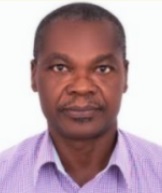 Ernest G. Foli (Ghana) is Principal Research Scientist at the CSIR Forestry Research Institute of Ghana.
He holds a PhD in Forestry with specialization in Tropical Forest Silviculture & Management from
University of Aberdeen, UK. His
professional fields of interest include Tropical Forest Ecology & Silviculture; Forest Mensuration &
Inventory (Natural forest and plantations); Tropical Forest Management; Growth & Yield Modelling; Forest
Biomass and Carbon Stocks
Assessment; Climate Change Mitigation and Adaptation. He has held several management positions in the
Forestry Research Institute of Ghana, including Head of the Ecosystem Services & Climate Change Division,
the Plantation Production
Division, Training and Consultancy Unit and, until recently, Deputy Director of the Institute. Dr Foli is
a member of numerous organizations, including International Union of Forest Research Organisations' Forest
Futures Task Force,
Commonwealth Forestry Association, UK (since 2000), Governing Council, Commonwealth Forestry Association,
UK (since 2009), Ghana Representative on the International Tropical Timber Organisation (ITTO) Thematic
Programme Advisory
Committee on REDDES (Yokohama, Japan) since 2009 and others.
Ernest G. Foli (Ghana) is Principal Research Scientist at the CSIR Forestry Research Institute of Ghana.
He holds a PhD in Forestry with specialization in Tropical Forest Silviculture & Management from
University of Aberdeen, UK. His
professional fields of interest include Tropical Forest Ecology & Silviculture; Forest Mensuration &
Inventory (Natural forest and plantations); Tropical Forest Management; Growth & Yield Modelling; Forest
Biomass and Carbon Stocks
Assessment; Climate Change Mitigation and Adaptation. He has held several management positions in the
Forestry Research Institute of Ghana, including Head of the Ecosystem Services & Climate Change Division,
the Plantation Production
Division, Training and Consultancy Unit and, until recently, Deputy Director of the Institute. Dr Foli is
a member of numerous organizations, including International Union of Forest Research Organisations' Forest
Futures Task Force,
Commonwealth Forestry Association, UK (since 2000), Governing Council, Commonwealth Forestry Association,
UK (since 2009), Ghana Representative on the International Tropical Timber Organisation (ITTO) Thematic
Programme Advisory
Committee on REDDES (Yokohama, Japan) since 2009 and others.
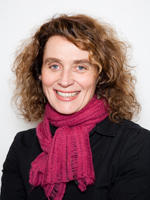 Eeva Furman (Finland) is Director of the Environmental Policy Centre at the Finnish Environment Institute
SYKE. She chairs the National Expert Panel on Sustainable Development, comprising of eminent professors
from different
disciplines. She is the coordinator of a project dealing with operationalization of ecosystem services and
natural capital, OpenNESS, funded by the 7th framework programme of the European Commission. She leads a
sub-project In a
project on politics, practices and the transformative potential of sustainable diets funded by Academy of
Finland. She is a member of council for the European long term biodiversity, ecosystems and awareness
research network, the
ALTER-Net. Ms Furman has more than 100 publications including peer reviewed international articles, report
and books for broad audience. She was responsible for the Gap analysis of implementing Agenda 2030 in
Finland. Her research
interests include policy effectiveness, mechanisms of problem oriented and policy relevant knowledge
production and transfer, urban resilience and socio-ecological processes.
Eeva Furman (Finland) is Director of the Environmental Policy Centre at the Finnish Environment Institute
SYKE. She chairs the National Expert Panel on Sustainable Development, comprising of eminent professors
from different
disciplines. She is the coordinator of a project dealing with operationalization of ecosystem services and
natural capital, OpenNESS, funded by the 7th framework programme of the European Commission. She leads a
sub-project In a
project on politics, practices and the transformative potential of sustainable diets funded by Academy of
Finland. She is a member of council for the European long term biodiversity, ecosystems and awareness
research network, the
ALTER-Net. Ms Furman has more than 100 publications including peer reviewed international articles, report
and books for broad audience. She was responsible for the Gap analysis of implementing Agenda 2030 in
Finland. Her research
interests include policy effectiveness, mechanisms of problem oriented and policy relevant knowledge
production and transfer, urban resilience and socio-ecological processes.
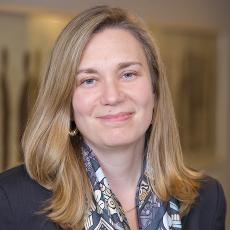 Amanda Glassman (USA) is chief operating officer and senior fellow at the Center for Global Development.
Her research focuses on priority-setting, resource allocation and value for money in global health, as
well as data for
development. She has more than 25 years of experience working on health and social protection policy and
programs in Latin America and elsewhere in the developing world. Prior to joining CGD, Glassman was
principal technical lead for
health at the Inter-American Development Bank, where she led policy dialogue with member countries,
designed the results-based grant program Salud Mesoamerica 2015 and served as team leader for conditional
cash transfer programs such
as Mexico’s Oportunidades and Colombia’s Familias en Accion. From 2005-2007, Glassman was deputy
director of the Global Health Financing Initiative at Brookings and carried out policy research on aid
effectiveness and domestic
financing issues in the health sector in low-income countries.
Amanda Glassman (USA) is chief operating officer and senior fellow at the Center for Global Development.
Her research focuses on priority-setting, resource allocation and value for money in global health, as
well as data for
development. She has more than 25 years of experience working on health and social protection policy and
programs in Latin America and elsewhere in the developing world. Prior to joining CGD, Glassman was
principal technical lead for
health at the Inter-American Development Bank, where she led policy dialogue with member countries,
designed the results-based grant program Salud Mesoamerica 2015 and served as team leader for conditional
cash transfer programs such
as Mexico’s Oportunidades and Colombia’s Familias en Accion. From 2005-2007, Glassman was deputy
director of the Global Health Financing Initiative at Brookings and carried out policy research on aid
effectiveness and domestic
financing issues in the health sector in low-income countries.
 Gonzalo Hernández Licona (Mexico) is the Director of the National Council for the Evaluation of Social
Development Policy (CONEVAL). The objective of CONEVAL is to evaluate the social development policy and
programs, as well as
measuring poverty in Mexico. He is also Board Member of the International Initiative for Impact Evaluation
(3ie), Board Member of El Colegio de México, member of the Evaluation Committee of the GAVI Alliance and
teaches Development
Economics at ITAM in Mexico since 1991. He holds a Ph.D. in Economics from the University of Oxford, UK,
a Masters Degree in Economics from the University of Essex, UK, and a Bachelor’s Degree in Economics
from the Mexico Autonomous
Institute of Technology (ITAM). He was Head of Evaluation and Monitoring at the Ministry of Social
Development. He was full-time Chair Professor at the Mexico Autonomous Institute of Technology (ITAM) in
the Department of Economics
from 1991 to 1992 and from 1996 to 2002 and acted as Headmaster of the BA in Economics in the same
institution. From 1996 to 2000 he was Academic Representative to the North American Agreement on Labor
Cooperation Labor Cooperation
Commission.
Gonzalo Hernández Licona (Mexico) is the Director of the National Council for the Evaluation of Social
Development Policy (CONEVAL). The objective of CONEVAL is to evaluate the social development policy and
programs, as well as
measuring poverty in Mexico. He is also Board Member of the International Initiative for Impact Evaluation
(3ie), Board Member of El Colegio de México, member of the Evaluation Committee of the GAVI Alliance and
teaches Development
Economics at ITAM in Mexico since 1991. He holds a Ph.D. in Economics from the University of Oxford, UK,
a Masters Degree in Economics from the University of Essex, UK, and a Bachelor’s Degree in Economics
from the Mexico Autonomous
Institute of Technology (ITAM). He was Head of Evaluation and Monitoring at the Ministry of Social
Development. He was full-time Chair Professor at the Mexico Autonomous Institute of Technology (ITAM) in
the Department of Economics
from 1991 to 1992 and from 1996 to 2002 and acted as Headmaster of the BA in Economics in the same
institution. From 1996 to 2000 he was Academic Representative to the North American Agreement on Labor
Cooperation Labor Cooperation
Commission.
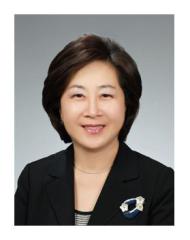 Eun Mee Kim (Korea) is Professor and Dean at the Graduate School of International Studies, the Director of
the Institute for Development and Human Security (IDHS) and the Director of the Ewha Global Health
Institute for Girls (GHIG) at
Ewha Womans University (Seoul, Korea). She is currently PI on a research grant on Korea's Global Health
Strategy focusing on South Korea's global public health strategy and programs funded by the Bill & Melinda
Gates Foundation since
2013. She has conducted research comparing emerging and traditional donors, and the relationship between
human security and development with a research grant funded by the WCU (World Class University) program
through the National
Research Foundation of Korea funded by the Ministry of Education, Science and Technology of the Republic
of Korea. Before coming to Ewha, she was Professor in Sociology at the University of Southern California;
and Visiting Scholar at
Harvard University and Brown University. Research interests include East Asian development; globalization;
development cooperation; multiculturalism, and chaebol.
Eun Mee Kim (Korea) is Professor and Dean at the Graduate School of International Studies, the Director of
the Institute for Development and Human Security (IDHS) and the Director of the Ewha Global Health
Institute for Girls (GHIG) at
Ewha Womans University (Seoul, Korea). She is currently PI on a research grant on Korea's Global Health
Strategy focusing on South Korea's global public health strategy and programs funded by the Bill & Melinda
Gates Foundation since
2013. She has conducted research comparing emerging and traditional donors, and the relationship between
human security and development with a research grant funded by the WCU (World Class University) program
through the National
Research Foundation of Korea funded by the Ministry of Education, Science and Technology of the Republic
of Korea. Before coming to Ewha, she was Professor in Sociology at the University of Southern California;
and Visiting Scholar at
Harvard University and Brown University. Research interests include East Asian development; globalization;
development cooperation; multiculturalism, and chaebol.
 Wolfgang Lutz (Austria) is Founding Director of the Wittgenstein Centre for Demography and Global Human
Capital (a collaboration of IIASA, the Austrian Academy of Sciences and WU). He joined IIASA in October
1985, where he is Program
Director of the World Population (POP) Program. Since 2002, he has also been scientific Director of the
Vienna Institute of Demography (VID) of the Austrian Academy of Sciences and since 2008, Professor of
Applied Statistics at the WU
(Vienna University of Economics and Business). He is also Professorial Research Fellow at the Oxford
Martin School and Honorary Professor of Shanghai University. Professor Lutz has worked on family
demography, fertility analysis,
population projection, and the interaction between population and environment. He is the author of the
series of world population projections produced by IIASA and has developed approaches for projecting
education and human capital. In
2008 he received an ERC Advanced Grant, in 2009 the Mattei Dogan Award of the IUSSP, and in 2010 the
Wittgenstein Prize, the highest Austrian science award. He is elected full member of the Austrian Academy
of Sciences, the German
National Academy Leopoldina, The World Academy of Sciences (TWAS), the Finnish Society of Sciences and
Letters and the US National Academy of Sciences.
Wolfgang Lutz (Austria) is Founding Director of the Wittgenstein Centre for Demography and Global Human
Capital (a collaboration of IIASA, the Austrian Academy of Sciences and WU). He joined IIASA in October
1985, where he is Program
Director of the World Population (POP) Program. Since 2002, he has also been scientific Director of the
Vienna Institute of Demography (VID) of the Austrian Academy of Sciences and since 2008, Professor of
Applied Statistics at the WU
(Vienna University of Economics and Business). He is also Professorial Research Fellow at the Oxford
Martin School and Honorary Professor of Shanghai University. Professor Lutz has worked on family
demography, fertility analysis,
population projection, and the interaction between population and environment. He is the author of the
series of world population projections produced by IIASA and has developed approaches for projecting
education and human capital. In
2008 he received an ERC Advanced Grant, in 2009 the Mattei Dogan Award of the IUSSP, and in 2010 the
Wittgenstein Prize, the highest Austrian science award. He is elected full member of the Austrian Academy
of Sciences, the German
National Academy Leopoldina, The World Academy of Sciences (TWAS), the Finnish Society of Sciences and
Letters and the US National Academy of Sciences.
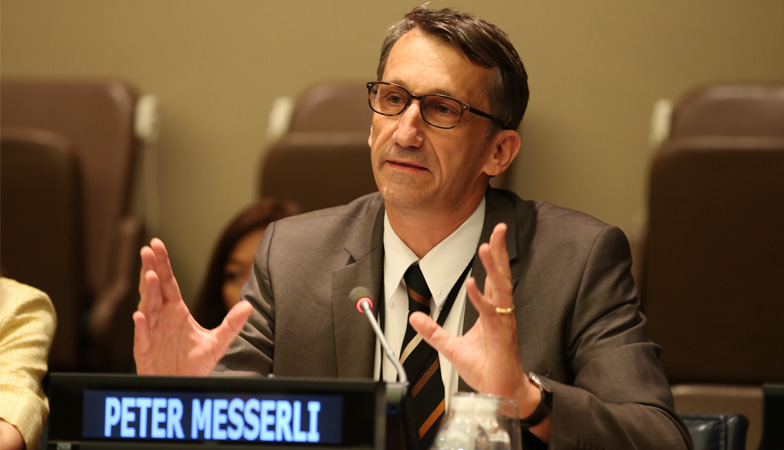 Peter Messerli (Switzerland) is Professor for Sustainable Development and Director of the Centre for
Development and Environment (CDE) at the University of Bern, Switzerland. As a land system scientist and
geographer his research
interests lie in the sustainable development of social-ecological systems in Africa and Asia. He focuses
on increasingly globalized and competing claims on land, rural transformation processes, and spatial
manifestations of their
outcomes in the Global South. He has lived and worked more than 10 years in Madagascar and Laos, directing
large-scale research projects focusing on inter- and transdisciplinarity. Committed to an engaged and
transformative
sustainability science, he has acquired an extensive experience in science-policy interactions from the
local to the global level. He is also the co-chair of Future Earth’s Global Land Programme (GLP) and
occupies many functions in
advising and guiding governmental, scientific, and civil-society organisations related to sustainable
development.
Peter Messerli (Switzerland) is Professor for Sustainable Development and Director of the Centre for
Development and Environment (CDE) at the University of Bern, Switzerland. As a land system scientist and
geographer his research
interests lie in the sustainable development of social-ecological systems in Africa and Asia. He focuses
on increasingly globalized and competing claims on land, rural transformation processes, and spatial
manifestations of their
outcomes in the Global South. He has lived and worked more than 10 years in Madagascar and Laos, directing
large-scale research projects focusing on inter- and transdisciplinarity. Committed to an engaged and
transformative
sustainability science, he has acquired an extensive experience in science-policy interactions from the
local to the global level. He is also the co-chair of Future Earth’s Global Land Programme (GLP) and
occupies many functions in
advising and guiding governmental, scientific, and civil-society organisations related to sustainable
development.
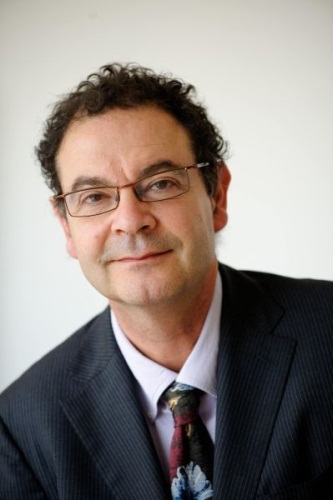 Jean-Paul Moatti (France) is Chairman of the Board and Chief Executive Officer of the French Research
Institute for Development (IRD). He is an internationally recognized expert in the field of health
economics, who has had a major
impact in regard to the problem of HIV disease. He has been a member of numerous World health organization
and World Bank committees on the economics of AIDS and access to HIV/AIDS care in developing countries. He
is the author of over
350 articles in scientific reviews and publications on both economic and social sciences and biomedical
disciplines and public health. He has been at the head of many national scientific bodies. In particular,
he was the director of
the Institute for Public Health (ISP) of the French Alliance for Health and Life sciences (Aviesan), which
now coordinates all public research in this sector. He was also a member of the national committee of the
CNRS and of the
governing board of Aix-Marseille University. He was vice Chair of Inserm (French NIH) Scientific Advisory
Board, as well as President of the Scientific Board of French National Institute for Prevention and Health
Education (INPES) and
of the “Research in public health, human and social sciences†scientific committee of the French
Agency for Aids and hepatitis research (ANRS). He is currently a member of the scientific boards of the
French Institute for Nuclear
Protection & Safety (IRSN) and the National School of Public Health (EHESP).
Jean-Paul Moatti (France) is Chairman of the Board and Chief Executive Officer of the French Research
Institute for Development (IRD). He is an internationally recognized expert in the field of health
economics, who has had a major
impact in regard to the problem of HIV disease. He has been a member of numerous World health organization
and World Bank committees on the economics of AIDS and access to HIV/AIDS care in developing countries. He
is the author of over
350 articles in scientific reviews and publications on both economic and social sciences and biomedical
disciplines and public health. He has been at the head of many national scientific bodies. In particular,
he was the director of
the Institute for Public Health (ISP) of the French Alliance for Health and Life sciences (Aviesan), which
now coordinates all public research in this sector. He was also a member of the national committee of the
CNRS and of the
governing board of Aix-Marseille University. He was vice Chair of Inserm (French NIH) Scientific Advisory
Board, as well as President of the Scientific Board of French National Institute for Prevention and Health
Education (INPES) and
of the “Research in public health, human and social sciences†scientific committee of the French
Agency for Aids and hepatitis research (ANRS). He is currently a member of the scientific boards of the
French Institute for Nuclear
Protection & Safety (IRSN) and the National School of Public Health (EHESP).
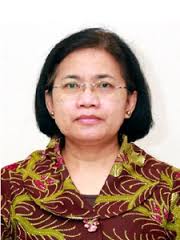 Until May 2016, Endah Murniningtyas was Deputy Minister for National Resources and Environment at the
Ministry of National Development Planning/National Development Planning Agency (BAPPENAS) of Republic of
Indonesia. She was the
Indonesian Representative a the Open Working Group on SDs at the UN. She has been working at BAPPENAS for
over 30 years in the area of natural resources, economics, and poverty and has been a frequent lecturer at
Bogor Agricultural
Institute. She is frequently speak at various international conference on Development Plan, SDGs and
Povert Reductions. She is an active board member of Perhimpunan Ekonomi Pertanian Indonesia (Perhepi), and
also a member of the Long
Term Development Planning Study and Strategic Planning Team of BAPPENAS. She graduated with a BSc in
Agricultural Economics and Social from Bogor Agricultural Institute in 1984, graduated with an MSc in
Agricultural and Resource
Economics from Oregon State University in 1989, and was awarded a PhD from Colorado State University in
2000 for studies in Agricultural and Resource Economics.
Until May 2016, Endah Murniningtyas was Deputy Minister for National Resources and Environment at the
Ministry of National Development Planning/National Development Planning Agency (BAPPENAS) of Republic of
Indonesia. She was the
Indonesian Representative a the Open Working Group on SDs at the UN. She has been working at BAPPENAS for
over 30 years in the area of natural resources, economics, and poverty and has been a frequent lecturer at
Bogor Agricultural
Institute. She is frequently speak at various international conference on Development Plan, SDGs and
Povert Reductions. She is an active board member of Perhimpunan Ekonomi Pertanian Indonesia (Perhepi), and
also a member of the Long
Term Development Planning Study and Strategic Planning Team of BAPPENAS. She graduated with a BSc in
Agricultural Economics and Social from Bogor Agricultural Institute in 1984, graduated with an MSc in
Agricultural and Resource
Economics from Oregon State University in 1989, and was awarded a PhD from Colorado State University in
2000 for studies in Agricultural and Resource Economics.
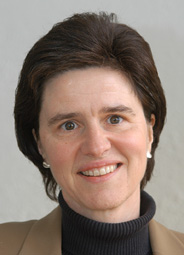 Katherine Richardson (Denmark) is Professor of Biological Oceanography and Leader of the Sustainability
Science Center at the University of Copenhagen. She was Chair of the Scientific Steering Committee for the
scientific conference
Climate Change: Global Risks, Challenges and Decisions, which sought to inform the 2010 United Nations
Climate Change Conference. She was also Chair of the Danish Commission on Climate Change Policy which
developed the plan for
removing fossil fuels from the Danish energy and transport sectors upon which the current national energy
strategy is based. She is a member of the Danish Council on Climate Change. Her research is carried out in
the Center for
Macroecology, Evolution and Climate and focuses on biogeochemical processes in the surface ocean and how
these are influenced by climate change. Specifically, her work deals with how changes in climate and
biodiversity in the ocean
interact to influence the global carbon cycle. She is also a co-leader in the development of the Planetary
Boundaries framework aiming to identify a safe operating space for humanity in relation to its
perturbation of the global
environment.
Katherine Richardson (Denmark) is Professor of Biological Oceanography and Leader of the Sustainability
Science Center at the University of Copenhagen. She was Chair of the Scientific Steering Committee for the
scientific conference
Climate Change: Global Risks, Challenges and Decisions, which sought to inform the 2010 United Nations
Climate Change Conference. She was also Chair of the Danish Commission on Climate Change Policy which
developed the plan for
removing fossil fuels from the Danish energy and transport sectors upon which the current national energy
strategy is based. She is a member of the Danish Council on Climate Change. Her research is carried out in
the Center for
Macroecology, Evolution and Climate and focuses on biogeochemical processes in the surface ocean and how
these are influenced by climate change. Specifically, her work deals with how changes in climate and
biodiversity in the ocean
interact to influence the global carbon cycle. She is also a co-leader in the development of the Planetary
Boundaries framework aiming to identify a safe operating space for humanity in relation to its
perturbation of the global
environment.
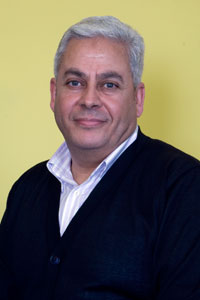 Muhammad Saidam (Jordan) holds a PhD in Environment and Water Resources Engineering from Imperial College
of Science Technology & Medicine – London (1995) and has been a Senior Researcher in the Royal
Scientific Society (RSS) in
Jordan since 2006. With over 25 specialized locally and internationally accredited laboratories and 500
scientists, researchers and technical support staff, RSS is the premier applied research institution,
consultancy, and technical
support service provider in Jordan. Dr. Saidam has over 30 years of experience in studies, consultations
and research related to the fields of water, wastewater and environment and has published, as a first
author, circa 50 papers and
technical reports in English and Arabic. He is currently the Chief Science Officer (CSO) in RSS, with main
responsibilities including strategic planning and supervising implementation of research and consultation
projects in the four
Applied Science Centres of RSS: Energy, Water & Environment, Sustainable Buildings, and information
Technology. He previously was the Executive Director of RSS Knowledge Sector (Energy, Water, Environment &
Sustainable Buildings, 2012
- 2014). He has also been an active partner in European research consortia over the period 1995-2010.
Muhammad serves in the International Council for Science (ICSU) Committee on Scientific Planning and
Review (CSPR) (2015-2018).
Recently, he was selected to serve in the committee that will oversee a 3-year project (2016 – 2019) on
“Improving Scientific Input to Global Policy Making: Strategies for Attaining the Sustainable
Development Goalsâ€, organized
by the Inter Academy Partnership (IAP).
Muhammad Saidam (Jordan) holds a PhD in Environment and Water Resources Engineering from Imperial College
of Science Technology & Medicine – London (1995) and has been a Senior Researcher in the Royal
Scientific Society (RSS) in
Jordan since 2006. With over 25 specialized locally and internationally accredited laboratories and 500
scientists, researchers and technical support staff, RSS is the premier applied research institution,
consultancy, and technical
support service provider in Jordan. Dr. Saidam has over 30 years of experience in studies, consultations
and research related to the fields of water, wastewater and environment and has published, as a first
author, circa 50 papers and
technical reports in English and Arabic. He is currently the Chief Science Officer (CSO) in RSS, with main
responsibilities including strategic planning and supervising implementation of research and consultation
projects in the four
Applied Science Centres of RSS: Energy, Water & Environment, Sustainable Buildings, and information
Technology. He previously was the Executive Director of RSS Knowledge Sector (Energy, Water, Environment &
Sustainable Buildings, 2012
- 2014). He has also been an active partner in European research consortia over the period 1995-2010.
Muhammad serves in the International Council for Science (ICSU) Committee on Scientific Planning and
Review (CSPR) (2015-2018).
Recently, he was selected to serve in the committee that will oversee a 3-year project (2016 – 2019) on
“Improving Scientific Input to Global Policy Making: Strategies for Attaining the Sustainable
Development Goalsâ€, organized
by the Inter Academy Partnership (IAP).
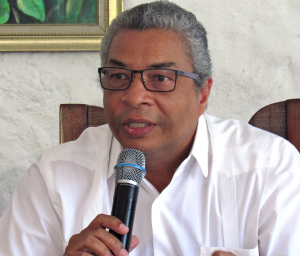 David Smith (Jamaica) is Coordinator of the Institute for Sustainable Development at the University of the
West Indies (UWI) and the University Consortium for Small Island States (UCSIS), and the Caribbean Chair
for the Sustainable
Development Solutions Network. The institute focuses on research in Sustainable Development Governance and
Policy, Disaster Management and Environmental Management. Dr Smith was an expert reviewer for the IPCC
Special Report on
Managing the Risks of Extreme Events (SREX). He served on the Board of the Caribbean Conservation
Association for five years and was President in 1995. From 1994 to 2000 he was a Regional Councilor of
IUCN-The World Conservation Union
and the Chair of the Business Committee of IUCN’s Council as well as a member of the steering committees
of the IUCN commissions on Species Survival, Protected Areas, and Communications and Education. He oversaw
the development of
the Jamaican Protected Areas System Plan and contributed to the National Forestry Management Plan. He has
consulted on small business management and the design of environmental financing mechanisms in Jamaica,
Uganda, Guyana and
Trinidad and Tobago.
David Smith (Jamaica) is Coordinator of the Institute for Sustainable Development at the University of the
West Indies (UWI) and the University Consortium for Small Island States (UCSIS), and the Caribbean Chair
for the Sustainable
Development Solutions Network. The institute focuses on research in Sustainable Development Governance and
Policy, Disaster Management and Environmental Management. Dr Smith was an expert reviewer for the IPCC
Special Report on
Managing the Risks of Extreme Events (SREX). He served on the Board of the Caribbean Conservation
Association for five years and was President in 1995. From 1994 to 2000 he was a Regional Councilor of
IUCN-The World Conservation Union
and the Chair of the Business Committee of IUCN’s Council as well as a member of the steering committees
of the IUCN commissions on Species Survival, Protected Areas, and Communications and Education. He oversaw
the development of
the Jamaican Protected Areas System Plan and contributed to the National Forestry Management Plan. He has
consulted on small business management and the design of environmental financing mechanisms in Jamaica,
Uganda, Guyana and
Trinidad and Tobago.
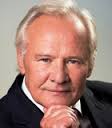 Jurgis Kazimieras Staniakis (Lithuania) is a full member of Lithuanian Academy of Sciences, Professor at
Kaunas University of Technology and Director of the Institute of Environmental Engineering. In 1992, he
was the first in
Lithuania and in the former Soviet Union and one of the pioneers in Central & Eastern Europe to start
developing the strategy and theory of cleaner production / pollution prevention and implementing it in
industry. The methodology is
based on systematic approach to problem solving, pollution prevention, environment and waste management,
pollution modelling and sustainable development. He was a manager and leading expert for more than 80
international sustainable
development programmes and projects implemented in Lithuania, other EU countries and a number of
developing countries, delivered in cooperation with international organizations (UNEP, UNIDO, OECD, EBRD)
and partners from developed
countries. Prof. Staniškis took part in elaborating a number of international and national strategies and
programmes, such as the Cleaner Production Capacity Building Programme for Central and Eastern Europe
(OECD), the Lithuanian
White Book of Science and Technology, and the Programme of Sustainable Development of the Lithuanian
Industry. In 2011, he was elected as an Executive committee member of the UNEP/UNIDO Global Network on
Resource Efficient and Cleaner
Production (RECP-Net). He has received numerous awards, including the Lithuanian National Prize in
Science, the prize of the President of the Republic of Lithuania and the Baltic Sea Award.
Jurgis Kazimieras Staniakis (Lithuania) is a full member of Lithuanian Academy of Sciences, Professor at
Kaunas University of Technology and Director of the Institute of Environmental Engineering. In 1992, he
was the first in
Lithuania and in the former Soviet Union and one of the pioneers in Central & Eastern Europe to start
developing the strategy and theory of cleaner production / pollution prevention and implementing it in
industry. The methodology is
based on systematic approach to problem solving, pollution prevention, environment and waste management,
pollution modelling and sustainable development. He was a manager and leading expert for more than 80
international sustainable
development programmes and projects implemented in Lithuania, other EU countries and a number of
developing countries, delivered in cooperation with international organizations (UNEP, UNIDO, OECD, EBRD)
and partners from developed
countries. Prof. Staniškis took part in elaborating a number of international and national strategies and
programmes, such as the Cleaner Production Capacity Building Programme for Central and Eastern Europe
(OECD), the Lithuanian
White Book of Science and Technology, and the Programme of Sustainable Development of the Lithuanian
Industry. In 2011, he was elected as an Executive committee member of the UNEP/UNIDO Global Network on
Resource Efficient and Cleaner
Production (RECP-Net). He has received numerous awards, including the Lithuanian National Prize in
Science, the prize of the President of the Republic of Lithuania and the Baltic Sea Award.
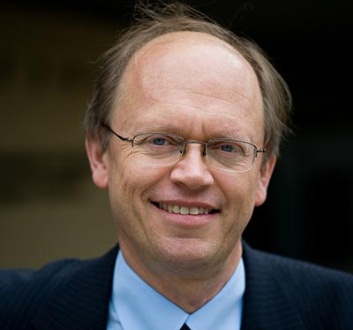 Jean-Pascal van Ypersele (Belgium) is Professor of climatology and sustainable development in Université
catholique de Louvain (UCL, Belgium). He also co-directs its interdisciplinary Master programme in Science
and Management of the
Environment. Doing research on various aspects of climate change since 1980, he has published with
scientists from many disciplines. He has been involved since 1995 in IPCC activities as author and Bureau
member, and was Vice-Chair of
the IPCC from 2008 to 2015. Professor van Ypersele is a member of the Belgian Federal Council for
Sustainable Development since 1993, and he chairs its Working Group on "Energy and Climate". He has also
been science advisor in the
Belgian delegations to more than twenty United Nations conferences. He has won numerous prizes and awards.
He is also active on Twitter: @JPvanYpersele.
Jean-Pascal van Ypersele (Belgium) is Professor of climatology and sustainable development in Université
catholique de Louvain (UCL, Belgium). He also co-directs its interdisciplinary Master programme in Science
and Management of the
Environment. Doing research on various aspects of climate change since 1980, he has published with
scientists from many disciplines. He has been involved since 1995 in IPCC activities as author and Bureau
member, and was Vice-Chair of
the IPCC from 2008 to 2015. Professor van Ypersele is a member of the Belgian Federal Council for
Sustainable Development since 1993, and he chairs its Working Group on "Energy and Climate". He has also
been science advisor in the
Belgian delegations to more than twenty United Nations conferences. He has won numerous prizes and awards.
He is also active on Twitter: @JPvanYpersele.
|
Location in GSDR 2019 |
Additional information with hyperlinks |
|---|---|
|
Box 1-2 |
Box 1-2 Interactions among Sustainable Development Goals Visit the interactive repository of SDG interactions for details: https://datablog.cde.unibe.ch/index.php/2019/08/29/sdg-interactions/ |
|
Figure 2-1 |
Figure 2-1: Systemic interactions related to Goal 2 (Zero hunger) Figure inspired by a contribution by Nina Weitz, Stockholm Environment Institute (SEI). Source: Weitz, N., Carlsen, H., Nilsson, M., & Skånberg, K. (2017). Towards systemic and contextual priority setting for implementing the 2030 Agenda. Sustainability Science. https://doi.org/10.1007/s11625-017-0470-0 . |
|
Box 2-1 |
Box 2-1 Political equality Leininger, Julia, Anna Lührmann, and Rachel Sigman. 2019. “The relevance of social policies for democracy: preventing autocratisation through synergies between SDG 10 and SDG 16.” Bonn: German Development Institute. http://www.die-gdi.de/en/discussion-paper/article/the-relevance-of-social-policies-for-democracy-preventing-autocratisation-through-synergies-between-sdg-10-and-sdg-16/ . |
|
Box 2-8 |
Box 2-8 Tackling inequality is good for poverty reduction Box provided by Mario Negre (DIE) and World Bank's Chrisoph Lakner, Daniel Mahler and Espen B. Prydz. Estimations based on: Lakner, Christoph, Daniel Gerszon Mahler, Mario Negre, and Espen Beer Prydz. 2019. “How Much Does Reducing Inequality Matter for Global Poverty ?” WPS8869. The World Bank. http://documents.worldbank.org/curated/en/328651559243659214/How-Much-Does-Reducing-Inequality-Matter-for-Global-Poverty . |
|
Box 2-32 |
Box 2-32 Technology for sustainability in the cement industry Scrivener, Karen, Fernando Martirena, Shashank Bishnoi, and Soumen Maity. 2018. “Calcined Clay Limestone Cements (LC3).” Cement and Concrete Research, Report of UNEP SBCI WORKING GROUP ON LOW-CO2 ECO-EFFICIENT CEMENT-BASED MATERIALS, 114 (December): 49–56. https://doi.org/10.1016/j.cemconres.2017.08.017 . Scrivener, Karen, François Avet, Hamed Maraghechi, Franco Zunino, Julien Ston, Wilasinee Hanpongpun, and Aurélie Favier. 2018. “Impacting Factors and Properties of Limestone Calcined Clay Cements (LC3).” Green Materials 7 (1): 3–14. https://doi.org/10.1680/jgrma.18.00029 . |
|
Box 2-36 |
Box 2-36 Sustainable Development Goals for resilient mountain communities Box adapted from contribution by Susanne Wymann von Dach, CDE, University of Bern. Source: Wymann von Dach, Susanne, Christoph Peter Bracher, Manuel Peralvo, Katya Perez, and Carolina Adler. 2018. “Leaving No One in Mountains behind: Localizing the SDGs for Resilience of Mountain People and Ecosystems.” Info:eu-repo/semantics/report. Bern, Switzerland: Centre for Development and Environment and Mountain Research Initiative, with Bern Open Publishing (BOP). https://doi.org/10.7892/boris.120130 . Kulonen, Aino Lyydia, Carolina Adler, Christoph Peter Bracher, and Susanne Wymann von Dach. 2019. “Spatial Context Matters in Monitoring and Reporting on Sustainable Development Goals: Reflections Based on Research in Mountain Regions.” Gaia : Ecological Perspectives for Science and Society 28: 90–94. https:// doi:10.14512/gaia.28.2.5 . |
|
Box 2-39 |
2-39 Networked Sustainable Development Goals through a climate lens Box adapted from a contribution by Hannah Janetschek, German Development Institute; Clara Brandi, German Development Institute; and Adis Dzebo, Swedish Environment Institute.
Dzebo, Adis, Hannah Janetschek, Clara Brandi, and Gabriela Iacobuta. 2018. “The Sustainable Development Goals Viewed through a Climate Lens.” Stockholm Environment Institute. https://www.sei.org/publications/the-sustainable-development-goals-viewed-through-a-climate-lens/. Breuer, Anita, Hannah Janetschek, and Daniele Malerba. 2019. “Translating Sustainable Development Goal (SDG) Interdependencies into Policy Advice.” Sustainability 11 (7): 2092. https://doi.org/10.3390/su11072092. |
|
Endnote 123 |
Breuer, Anita, Julia Leininger, and Jale Tosun. 2019. “Integrated Policymaking: Choosing an Institutional Design for Implementing the Sustainable Development Goals (SDGs).” Bonn: German Development Institute. http://www.die-gdi.de/discussion-paper/article/integrated-policymaking-choosing-an-institutional-design-for-implementing-the-sustainable-development-goals-sdgs/ . |
|
Endnote 891 |
Adapted from contribution by the Center for Development and Environment (CDE), University of Bern, and Commission for Research Partnerships with Developing Countries (KFPE). |
|
Endnote 430 |
Berg, Annukka, Riina Antikainen, Ernesto Hartikainen, Sari Kauppi, Petrus Kautto, David Lazarevic, Sandra Piesik, and Laura Saikku. 2018. Circular Economy for Sustainable Development. Finnish Environment Institute. https://helda.helsinki.fi/handle/10138/251516 . |
|
600 |
Meletiou, Alexis, Miriam Grace, Marianne Darbi, Myriam Pham-Truffert, Karla Locher-Krause, Henri Rueff. 2019. EU renewable energy policies, global biodiversity, and the UN SDGs-A report of the EKLIPSE project. Wallingford, U.K.: Centre for Ecology & Hydrology. http://www.eklipse-mechanism.eu/apps/Eklipse_data/website/EU-RenewableEnergyReport_Final-28062019.pdf |
|
236 |
Burchi, Francesco, Daniele Malerba, Nicole Rippin, and Claudio Montenegro. 2019. Comparing Global Trends in Multidimensional and Income Poverty and Assessing Horizontal Inequalities . Bonn: German Development Institute. https://www.die-gdi.de/en/discussion-paper/article/comparing-global-trends-in-multidimensional-and-income-poverty-and-assessing-horizontal-inequalities/ |
|
290 |
Adapted from a contribution by Negre, Mario, German Development Institute. Source: Lakner, Christoph, Daniel Gerszon Mahler, Mario Negre, and Espen Beer Prydz. 2019. “How Much Does Reducing Inequality Matter for Global Poverty ?” WPS8869. The World Bank. http://documents.worldbank.org/curated/en/328651559243659214/How-Much-Does-Reducing-Inequality-Matter-for-Global-Poverty . |
Content coming soon